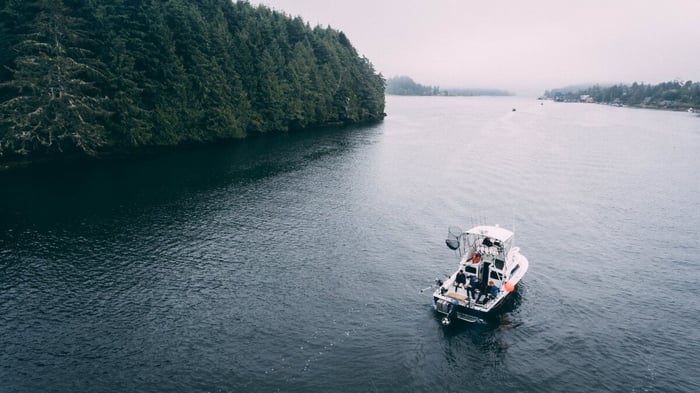What goes into the can matters.
From a $2 can of skipjack at a local gas station, to a $3 million behemoth bluefin at a Japanese market, tuna fishing has increased by an unsustainable rate of 1,000% in the last 60 years, making it one of most commonly consumed marine animals on the planet.
While not all tuna varieties are experiencing an equal threat for survival, there is a very urgent concern that overfishing and irresponsible fishing methods could pose a serious threat on our oceans. Yet in an industry riddled with deception and even seafood fraud, it’s tough to know how to ethically buy tuna.
Canning presents an opportunity for transparent and certified messaging to educate consumers on what they are buying—if they know what to look for.
Where was it sourced?
Albacore and skipjack make up for approximately 90 percent of all canned tuna stacked on the supermarket shelves. Their comparatively short lifespan and rate of reproductive maturation helps in sustaining healthier wild populations when compared to their big ticket bluefin relatives. But where the fish is sourced from matters.
It has been shown that the healthiest wild populations of the beloved albacore, or solid white tuna, thrive in the cold waters of the Pacific Northwest, whereas skipjack, or chunk light tuna, stocks do best in the slightly warmer Eastern and Central Pacific waters.
How was it caught?
Bycatch is potentially the biggest environmental detriment plaguing the tuna fishing industry. Commercial tuna fishermen often use what are called Fish Aggregation Devices (FADs). FADs are floating structures with satellite tracking that lure in schools of tuna, acting like fish magnets. The problem is that in addition to tuna, FADs also attract other sea life. When large purse-seine nets are dropped in the ocean alongside a FAD, fishermen often catch and tangle up sea turtles, dolphins, rays, and other unintended species that are often endangered, recklessly harming these ecosystems.
The best way to ensure that a can of tuna has been sourced without the use of FADs is by searching the label for the terms "pole and line caught" or “hook and line caught."
How is it packed?
Clever marketing campaigns coined phrases like Chicken of the Sea in the early twentieth century in an effort to distance the product from what it was; fish. Fisheries would attempt to mask the fishy smell of canned tuna by removing the fish oils, steaming the fish, and packing it in water.
To no surprise water packed tuna wasn’t exactly desirable to the European pallet. Instead a new wave of canned and jarred tuna producers came to the surface, primarily hand packing albacore and yellowfin tuna in olive oil to help restore the texture of the fish.
Packing tuna in olive oil, herbs, and spices creates a unique dimension to the product and its journey to the table. Looking for products served in high quality extra virgin and organic olive oils ensures that the oil being used is both healthy, and ideally coming from farms that follow ethical harvesting and employment practices.
Not all packing vessels are created equal. While BPA linings might not be as threatening as once believed, many producers have shifted towards non-BPA alternatives that are shown to be safer. Additionally many gourmet brands have turned the clock back towards using glass jars, and while jars might be aesthetically pleasing, they are not the best environmental option.
Aluminum is a 100 percent recyclable material, and aluminum cans are generally made up of 70 percent recycled content, whereas glass jars are typically made up of about 23 percent recycled content.
Oh, and those convenient plastic pouches? Those are made up of only 3 percent recycled content.
Is it certified?
Organizations like the Marine Stewardship Council are doing their part in ensuring that there is an open dialog and recognition for fisheries that are sustainably sourcing their products. This recognition via the MSC bluefish label found on cans helps in making the canned seafood market the most transparent way to consume seafood products.
Canning fish is a tale of sustainability in itself. However many begin, and often end their canned fish journey with tuna. By exploring quality tuna products, a gateway to an array of other sustainably sourced canned seafood is opened, sparking important conversations around biodiversity and climate change.
This isn’t to say that there isn’t a need for low-cost sustainable seafood. This isn’t to say that tuna can’t be affordable. This means that we should all think twice before grabbing the $2 can of tuna.


